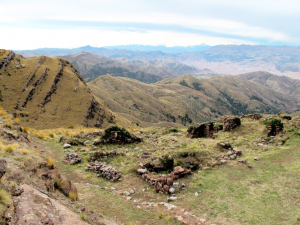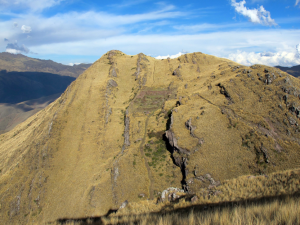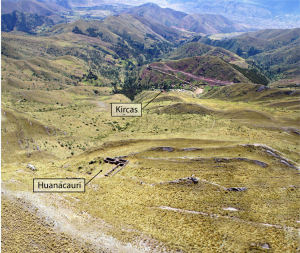Ethical Responsibility in the Face of the Incoming Administration
By Kurt E. Dongoske
For most people, the beginning of a new year offers a renewed sense of hope, happiness, and prosperity for the future. For me, as the Zuni Tribal Historic Preservation Officer and an archaeologist working in cultural resource management in the Southwest for 40 years, the dawning of 2017 brought anxiety; anxiety born out of a feeling of foreboding that our future, the future of our careers in cultural resource management, and the future of our environment are in imminent danger. Normally, I’m a pretty optimistic fellow, but the results of the recent presidential election left me feeling more than pessimistic. My sense of foreboding is based, in part, on the campaign platform of the President-elect in which he promised to diminish or abolish regulations, underscored by his anti-science, anti-climate change and fact denying rhetoric. Moreover, his recent announcements of identified individuals for key administrative positions heighten my apprehension.
Once the President-elect is in office, I fully expect an executive and legislative branch assault on all environmental and historic preservation legislation and regulation that industry currently views as being unnecessary impediments to so-called ‘development.’ The incoming administration most likely will move quickly to effectively promote and encourage gas, oil, and coal extraction on federal lands and couple this with a move toward seriously reducing compliance with environmental protection legislation and strong arm tactics to any push back by environmental or professional organizations.
Closer to home, I anticipate that the incoming administration will act to fundamentally undermine the preservation community’s commitment to protect, preserve, and interpret historical properties and cultural resources. Now more than ever, as the natural resource extraction industry is afforded unique privileging by the federal government, archaeological sites, sacred sites, traditional cultural properties and landscapes may be threatened with destruction without the current appropriate consideration or treatment. Efforts by the new administration to exempt categories of development projects from Section 106 of the National Historic Preservation Act and National Environmental Policy Act (NEPA) review, including reforming NEPA and the Section 106 process (e.g., diminishing or exempting compliance for privileged projects), will have a deleterious effect on cultural resource management.
But it is not just archaeological sites, historic properties, places, landscapes and the environment that will be threatened. The Republican Congress may entertain bills that seek to change what types of research are funded under the National Science Foundation (NSF). Republicans have already introduced legislation to remove archaeology, anthropology, and other social sciences research from NSF funding. If the attempts to eliminate NSF funding for these fields of research are successful, it will have a profound impact on academic-based anthropological and archaeological research for professors, graduate students, and the communities with which they work. This will cause negative reverberations throughout the academy and, even more importantly, historically and geographically marginalized communities that rely on the academy to make their voice, concerns, and struggles more public and responsible entities more accountable.
While the new Republican held Congress is anticipated to work toward diminishing environmental and historic preservation regulations, they may concomitantly attempt to curtail federally required Tribal consultation by reversing previous Executive Orders on tribal consultation. Should this occur, it will have a profoundly negative effect on the ability of Tribal Nations to put forth meaningful and effective voices in the protection of their places of sacred and traditional cultural importance. One need only look at the Dakota Access Pipeline, the resistance by the Standing Rock Sioux and the militarized response by the oil industry as an example of what may be in store for Native people. The “other”-izing of immigrant Mexicans and Muslims by the President-elect can be anticipated to extend to Native Americans as a form of delegitimizing and dismissing their claims of primacy of association to the landscape and to natural and cultural resources. If all of this occurs, not only will archaeological sites, traditional cultural properties and landscapes be threatened, if not completely disregarded, but also it will result in the violation of basic human rights for Native Americans to express a meaningful voice in the protection of their sacred places, cultural identities and living heritage.
As anthropologists and archaeologists, we should be deeply troubled with the President-elect’s past and current turgidity toward dismantling or decreasing legislation that provides for the consideration and protection of clean air, clean water, and healthy ecosystems. We have a professional ethical responsibility to work collaboratively and effectively to advocate for and protect the archaeological and cultural resources record and to speak out and work against any and all efforts that threaten these important places. Moreover, as anthropologists we have a profound ethical responsibility to advocate on behalf of indigenous people when they are being disenfranchised from a regulatory process that has been altered to privilege oil, gas, and coal extraction efforts on their ancestral lands.
The American Anthropological Association (AAA), the Society for American Archaeology, and the Register of Professional Archaeologists all have ethical principals or codes of conduct that define our responsibilities to the archaeological record. For example, the Society for American Archaeology’s ethical principle No. 1 calls upon all members of the Society to be "both caretakers of and advocates for the archaeological record for the benefit of all people," and "to use the specialized knowledge they gain to promote public understanding and support for its long-term preservation." Recently, the Society for American Archaeology’s Board of Directors issued direction to the membership (Our Ethical Principles, Our Actions: Member Responsibilities in a Time of Change) in response to what is viewed as a pending time of change. They added the following directions to the membership regarding ethical principle No. 1:
As members, we will therefore oppose any initiatives to weaken the present legal protections of archaeological sites and materials, be these through legislative process, rewriting of agency regulations, or other means. Moreover, our stewardship responsibilities require that we support and defend initiatives aimed at mitigating the impacts on cultural heritage of accelerating climate disruptions.
The AAA’s code of ethics speaks to our professional responsibilities to support and defend the rights of indigenous peoples and this is important for us, as anthropologists, to never forget and always act on. The AAA represents all anthropologists and archaeologists working in the United States and our collective economic viability and our ability to secure federal funding for academic research and cultural resource management projects will be under assault. It seems to me that every archaeological, anthropological, historic preservation and environmental professional organization has a dog in this fight and must be willing to speak out and lobby against any efforts to abolish or decrease environmental protection and historic preservation legislation.
As members of professional organizations we should encourage and support our organizations to establish strong lobbying coalitions with fellow environmental organizations in order to actively and effectively thwart any legislative or executive efforts to weaken current legal protections for the environment and historic properties, places, and landscapes. As individuals, I encourage each and every one of us to act locally, at the state level and nationally by contacting your congressional representatives and senators and expressing your concerns regarding the movement to rollback regulations, for those regulations not only help protect our collective cultural heritage and a healthy environment for generations to come, but are the backbone of providing appropriate consideration for and attention to various places that are central for the identity and ongoing traditional practices and benefits of countless indigenous and traditional communities.
Filed under: activism, archaeology, collaboration, funding, land rights, preservation, stewardship, the state | Comments Off on Ethical Responsibility in the Face of the Incoming Administration


